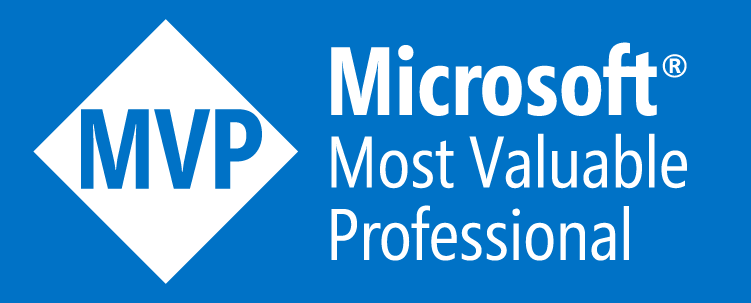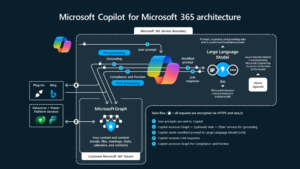A signing limit defines the largest financial
commitment that a worker is authorized to make on behalf of an employer.
commitment that a worker is authorized to make on behalf of an employer.
There are two types of signing limits — spending
limits and approval limits.
limits and approval limits.
- A spending limit is the maximum amount a worker
is authorized to spend on business-related purchases. - An approval limit is the maximum amount a worker
is authorized to approve for a specific business document when the document is
submitted to workflow.
The limits are associated with a
worker’s job or compensation level. Signing limits can also vary depending on
the transaction type — purchase requisitions, expense reports, purchase orders,
and invoices can have different signing limits.
Signing Limit
Parameters
Organizations assign default signing limits.
Depending on the configuration of signing limits in an organization, a worker
can obtain a default signing limit in one of the following ways.
Depending on the configuration of signing limits in an organization, a worker
can obtain a default signing limit in one of the following ways.
- The worker is automatically assigned the default
signing limit, based on the worker’s job or compensation level. - The worker must submit a signing limit request
in the Employee Services Portal in the Enterprise Portal for Microsoft Dynamics
AX.
Use the Signing limit parameters form to
set up how signing limits apply to your organization’s employees.
- Click Organization
administration > Setup > Signing
limits > Signing limit parameters. - In the Limit
basis field, select Job if signing limits should be based on your
employees’ job. Select Compensation level to base signing limits on your
employees’ compensation level. - Select the Require explicit signing limit request check box to force
employees to submit a signing limit request so they can be granted a spending
or approval limit. If this box is cleared, employees are automatically granted
the default spending or approval limit as defined for their job or compensation
level.
Require explicit signing limit request is UnMarked: The worker is automatically assigned the default signing limit, based on the worker’s job or compensation levelRequire explicit signing limit request is Marked: The worker must submit a signing limit request the Employee service portal in Enterprise Portal.
- Select the Signing limits for employees only check box if users with an employee record should be allowed to request and be granted signing limits. If this check box is not selected, contract employees will also be permitted to submit and be granted signing limits.
Procedure: Define a Signing Limit Policy
Default signing limit rules specify the spending and approval limits
for each document type and each job or compensation level. To define a signing
limit policy, follow these steps.
for each document type and each job or compensation level. To define a signing
limit policy, follow these steps.
- Click Organization
administration > Setup > Signing
limits > Signing limit policies. - Click Policy in
the New group of the
Action Pane. - Enter a Name and Description for
the policy. - In the Policy
organizations FastTab, select an organizational node to define the
policy for and click Add. - Click Close.
 |
| Step 1 |
 |
| Step 2 to 5 |
Procedure: Define a Default Signing Limit Policy Rule
You can define a default signing limit policy for
purchase requisitions, purchase orders, expense reports, and invoices. To
define a default signing limit policy for one of these transaction documents,
follow these steps.
purchase requisitions, purchase orders, expense reports, and invoices. To
define a default signing limit policy for one of these transaction documents,
follow these steps.
- Open Organization
administration > Setup > Signing
limits > Signing limit policies. - Select the signing limit policy for which to
configure a default signing limit, then click Edit in the Maintain group
of the Action Pane. - Click the Policy rules FastTab and select Default signing limit from the Policy rule type pane.
- Click Create
policy rule in the Policy
rules pane. - Enter the Effective date and Expiration
date for the policy rule, and then click New.
- In the Document type field, select the transaction type the rule applies to.

- Enter the default approval limit amount that is assigned to the specified
compensation levels or jobs for the selected document type in the Approval
amount field.
In
above screen shot; I put two rules associated with two Jobs; Accounts Assistant
and IT System Support with amount 3,000 and 10,000 consecutively for Purchase
Requisition. - Select the Currency the approval
amount is calculated in. - Enter the default spending limit amount that is
assigned to the specified compensation levels or jobs for the selected document
type in the Spending amount field.In
this example; I did not use spending limit as this example is only for approval
limits. - Select the Currency the spending
amount is calculated in. - Select the Jobs or Compensation
levels that the rule applies to. - Click Close.
Important note:
System will not
restrict the submission of the corresponding document based on the signing
limit. In our example; system will not throw an error when “Faisal” tries to
submit a Purchase requisition for more than 10000 USD. Signing limits work just
like a property i.e., Faisal’s spending limit is now set to 10000USD.
restrict the submission of the corresponding document based on the signing
limit. In our example; system will not throw an error when “Faisal” tries to
submit a Purchase requisition for more than 10000 USD. Signing limits work just
like a property i.e., Faisal’s spending limit is now set to 10000USD.
You must incorporate
the Signing limits in the workflow to make it working and see the
impact of your setup.
the Signing limits in the workflow to make it working and see the
impact of your setup.
Configuring the Workflow using the “Signing
limits”:
limits”:
Scenario: “Test
systems” decided the spending limit for “IT System Support” as 10000USD for the
Purchase requisition and thus any Purchase requisition below USD 10K doesn’t
need any approval. But, a PR which crosses USD 10K must get the approval by “X”
user.
systems” decided the spending limit for “IT System Support” as 10000USD for the
Purchase requisition and thus any Purchase requisition below USD 10K doesn’t
need any approval. But, a PR which crosses USD 10K must get the approval by “X”
user.
Note: I’m using
the user based approval in this workflow to make it easy to
understand. It can be done through “Managerial Hierarchy”.
the user based approval in this workflow to make it easy to
understand. It can be done through “Managerial Hierarchy”.
In the above
workflow, I’ve enabled the automatic actions by using preparer’s spending
limit. “Purchase requisition.approval amount” returns the total amount of
PRlines and if that is less than the “spending limit assigned” to the preparer,
it must be approved automatically.
workflow, I’ve enabled the automatic actions by using preparer’s spending
limit. “Purchase requisition.approval amount” returns the total amount of
PRlines and if that is less than the “spending limit assigned” to the preparer,
it must be approved automatically.
Double click the
“Approve PR” element to assign the user to whom the system should route when if
the PR amount is more than the spending limit allowed to the employee.
“Approve PR” element to assign the user to whom the system should route when if
the PR amount is more than the spending limit allowed to the employee.
1.
In the “step1” element>
right click >Properties > Select Assignment
In the “step1” element>
right click >Properties > Select Assignment
2.
Select Assignment
type “user” and in the “user tab” specify the user.
Select Assignment
type “user” and in the “user tab” specify the user.
3.
Now everything is
set.
Now everything is
set.
Create a PR with the
amount below USD 10K and submit it, It will be approved automatically as the PR
amount is less than the “spending limit” allowed for the employee.
amount below USD 10K and submit it, It will be approved automatically as the PR
amount is less than the “spending limit” allowed for the employee.
Create another PR
with the amount above USD 10K, you can notice that it will be routed to the
specific user.
with the amount above USD 10K, you can notice that it will be routed to the
specific user.
Note: You cannot
edit the “Unit price” field in the PR, so edit the quantity to have the needed
“PR amount”, alternatively, you can change the purchase price for the product
in Released products.
edit the “Unit price” field in the PR, so edit the quantity to have the needed
“PR amount”, alternatively, you can change the purchase price for the product
in Released products.











